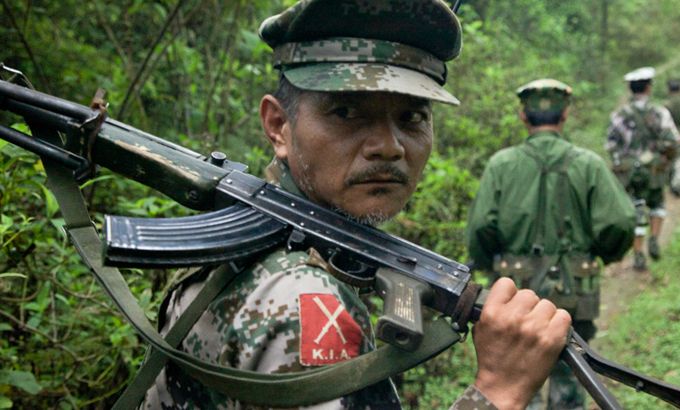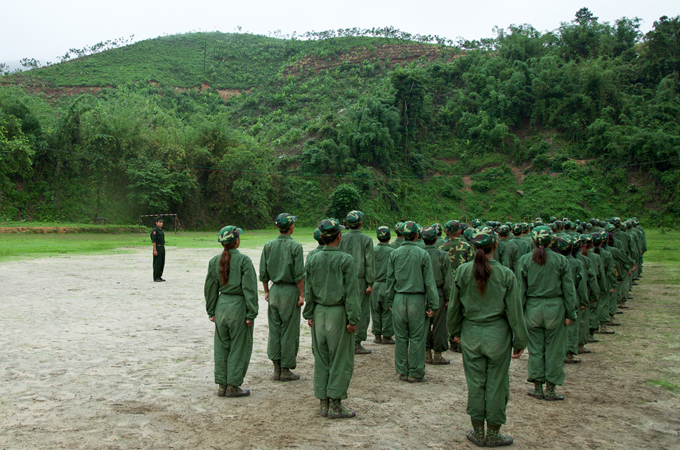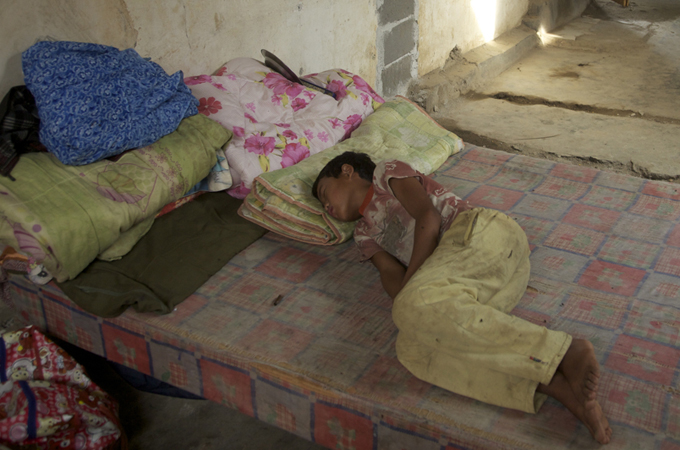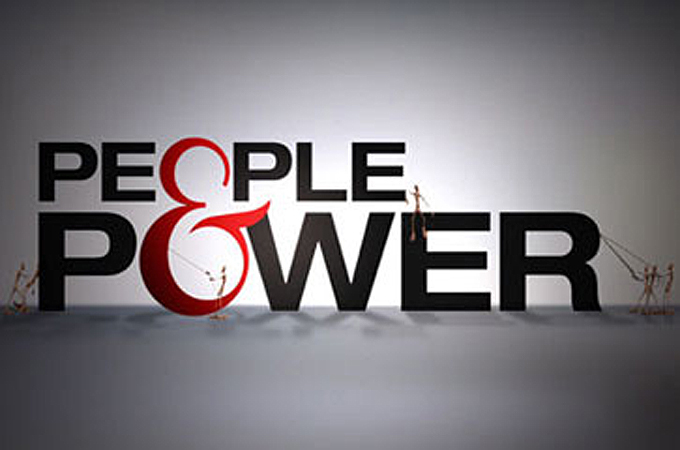
Blood and Gold: Inside Burma’s Hidden War
People & Power travels to northern Myanmar where the Kachin people are fighting a life-or-death struggle for autonomy.
Deep in the wilds of northern Myanmar’s Kachin state a brutal civil war has intensified over the past year between government forces and the Kachin Independence Army (KIA).
People & Power sent filmmakers Jason Motlagh and Steve Sapienza to Myanmar (formerly Burma) to investigate why the conflict rages on, despite the political reforms in the south that have impressed Western governments and investors now lining up to stake their claim in the resource-rich Asian nation.
| Burma’s hidden war |
By Jason Motlagh
 |
| Vastly outnumbered and outgunned, the KIA depends on a steady stream of recruits to fill its ranks [Jason Motlagh] |
Bald patches of dirt and shredded tree stumps speak to the artillery barrages that rained down on rebel Capt. Malang Naw Mai and his men when they arrived at their hilltop outpost nine months ago.
He has since lost about one-fifth of his unit in combat, but the veteran officer insists the Burmese Army’s ruthless treatment of ethnic Kachin civilians fuels his resolve to hold the frontline.
“I’m proud to be fighting their oppression and I will be satisfied if I die fighting,” he says.
The war in Kachin reignited last year when the Burmese Army attacked a Kachin Independence Army (KIA) post near a disputed hydropower dam site, ending a 17-year ceasefire. It has since ramped up its offensive, calling into question the authority of a nominally civilian government that has repeatedly ordered it to stop fighting.
“This so-called reform process has made it possible for the government – and the government means the military – to get away with almost anything,” says Bertil Lintner, an author and journalist who has covered Burma for more than 30 years. “Things they would have been severely criticised for in the past are being ignored by the international community.”
So far, more than 75,000 ethnic Kachin civilians have been driven from their ancestral lands. Human rights groups allege the Burmese army is intentionally attacking civilian areas, with wide-spread evidence of torture, rape, forced conscription and summary executions. Both sides employ child soldiers and continue to sow the ground with land mines.
According to a June report by Human Rights Watch, at least 10,000 additional Kachin refugees are stranded in make-shift camps across the border in China, where authorities still refuse to grant the United Nations and relief agencies access. Thousands have reportedly been forced back across the border, into harm’s way.
Such grim developments contradict the reform narrative now emanating from the long-time pariah state, officially known as Myanmar.
Open for business
Since coming to power last year, the government, led by Thein Sein, a former general, has freed hundreds of prisoners, eased media censorship and reached agreements with other ethnic minority rebel groups in a wide-ranging push to open up the country after decades of isolation.
The West has eagerly responded. Following historic by-elections in April in which democracy activist Aung San Suu Kyi was elected to parliament, the European Union suspended most of its sanctions. The US has likewise declared the country open and appointed its first ambassador in 22 years.
In June, just days after formally easing key sanctions against Burma, the US state department led dozens of representatives from top American companies – including Chevron, GE, Boeing, GM, Google and Goldman Sachs – to Burma to meet officials and explore investment opportunities. GE signed a deal that same week.
But voices of caution are sounding. In her Nobel prize acceptance speech in June, Suu Kyi warned against “blind faith” in Burma’s trajectory, asserting that ethnic tensions like those in Kachin state must be eased for the country to find its footing.
As western businesses beat a path to her homeland, Burma watchers are concerned that ongoing rights abuses against the Kachin and other ethnic minorities could be further marginalised.
“The international euphoria about the reform in Burma is definitely premature, especially with the crimes against humanity we’re seeing in Kachin state,” says Matthew Smith, a field investigator with Human Rights Watch.
Outmanned and outgunned, KIA guerillas have fought the Burmese military on and off for decades in their bid for greater political rights and control over lands rich in minerals, timber and, more recently, Chinese-funded hydropower projects that were brokered during the ceasefire period.
While other rebel movements in Karen and Chin states have inked deals with the government, KIA officials insist the Burmese used the truce as a cover to broker multi-billion dollar energy deals with China without their input. The current fighting was touched off when the Burmese Army advanced on KIA outposts near the Taping River.
“The main reason this war goes on is that Burma is trying to solve our differences by force, not dialogue. Even though we are not in a good position, it is compulsory for us to fight for our rights,” says Gen. Sumlat Gun Maw, the KIA’s vice chief of staff.
China: KIA’s lifeline to the world
Recent advances by the Burmese army toward Laiza, the KIA’s administrative capital, have forced the general’s staff to relocate their command center to a hotel a stone’s throw from the Chinese border. Today, the former boom town is empty, while the newly displaced continue to swell camps on its outskirts.
While China’s close ties with Burma’s former military government are well-known, it also remains the KIA’s lifeline to the world. Basic necessities such as medicines and rice must be smuggled into Kachin territory, and the KIA war chest is largely depends on taxes and illicit cross-border trade in products ranging from dry goods to teak.
In Laiza, the Chinese Yuan is the currency and Chinese mobile phone networks keep locals connected. China hosts Kachin university students, and when soldiers are seriously injured, lax border controls allow them passage to better hospitals for treatment.
At the same time, Chinese-funded infrastructure projects are at the crux of the conflict in Kachin State, none more so than the Myitsone dam, a joint venture between the Burmese government and state-owned China Power Investment Corp.
Slated to be the largest of seven along the Irrawaddy River, it was approved on grounds that it would benefit a region with poor infrastructure economic prospects. In fact, the $3.6bn project would have sent 90 percent of the electricity generated to China’s southwestern Yunnan province.
Sean Turnell, an expert on the Burmese economy, notes that the Kachin have “witnessed decades of having their resources extracted and this causes incredible animosity.” The Myitsone dam project, he adds, is a case in point.
Adding insult to injury, more than 12,000 Kachin have been forcibly relocated to Chinese-built camps to make way for the dam. While they have been issued free homes, appliances and utilities, they are unable to return to farmlands that have since been ravaged by mining and timber projects.
In the face of unprecedented public pressure over the dam’s social and environmental impact, President Sein halted construction last year, a rare shot in the arm for civic activism. Yet locals argue work has never stopped, and his orders that the Burmese Army end its brutal campaign in Kachin state continue to be ignored.
Gen. Gun Maw of the KIA says this proves Burma’s generals still call the shots behind the scenes.
“What we want is freedom and liberty,” he says. “But the Burmese Army still has no will for dialogue.”’
In recent months, informal rounds of peace talks between the warring parties have gone nowhere. According to KIA sources, the Burmese Army maneuvered artillery deeper into their territory while one meeting was being held inside China.
‘Protecting our land’
 |
| Many children who fled the fighting arrive in the camps without their parents [Jason Motlagh] |
Kachin communities continue to be uprooted by the fighting. At a sprawling camp outside of Maija Yang, the second-largest town under KIA-control, fresh waves of displaced Kachin described indiscriminate artillery and mortar fire that killed and maimed even as people fled.
“It was chaos; we didn’t know which way they were coming from,” says Pansang Brang, a 72-year-old farmer.
Of late many are arriving from Shan state, to the south, where they escaped heavy fighting near pair of major pipelines that will pump oil and gas to China starting next year.
May Li Awng, the founder of a grassroots aid group, says she is receiving more and more children who are turning up without their parents. “Some try to run (back to find them) but don’t know the way and get lost,” she says.
For the time being, they are safe from harm. Just eight miles away, up a series of muddy switchbacks, Capt. Naw Mai and his men keep up their bush patrols day and night for signs of Burmese infiltrators.
The hilltops are quiet but they must be vigilant. Their forward-most position sits opposite a Burmese Army outpost less than 1,200 meters away. A days-long gun battle could erupt at any moment.
“Even now, we don’t initiate fight with the Burmese Army camps around us,” he says after surveying the enemy position with his binoculars. “We are just protecting our land.”
People & Power can be seen each week at the following times GMT: Wednesday: 2230; Thursday: 0930; Friday: 0330; Saturday: 1630; Sunday: 2230; Monday: 0930. Click here for more on People & Power. |
